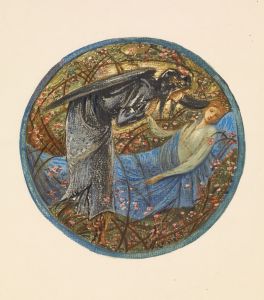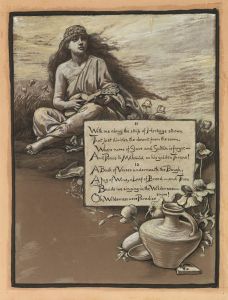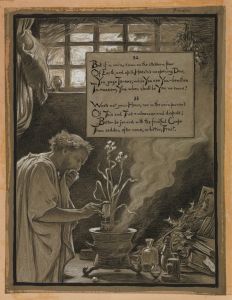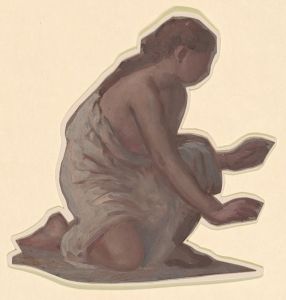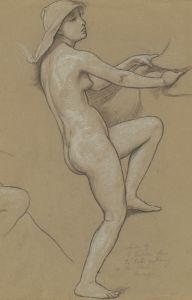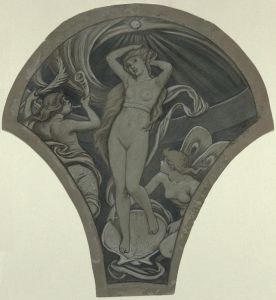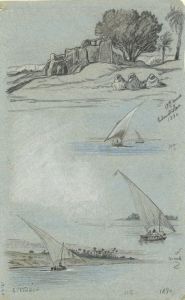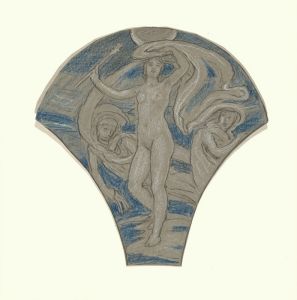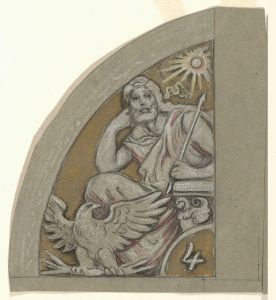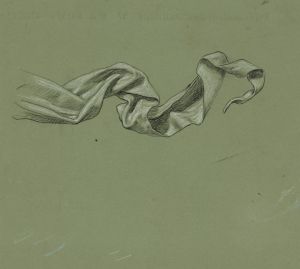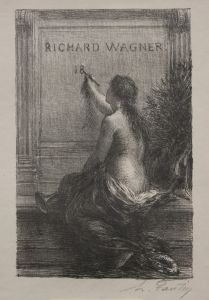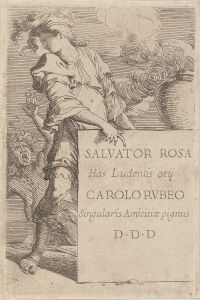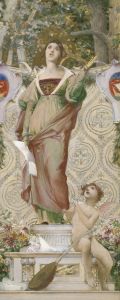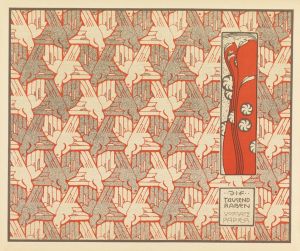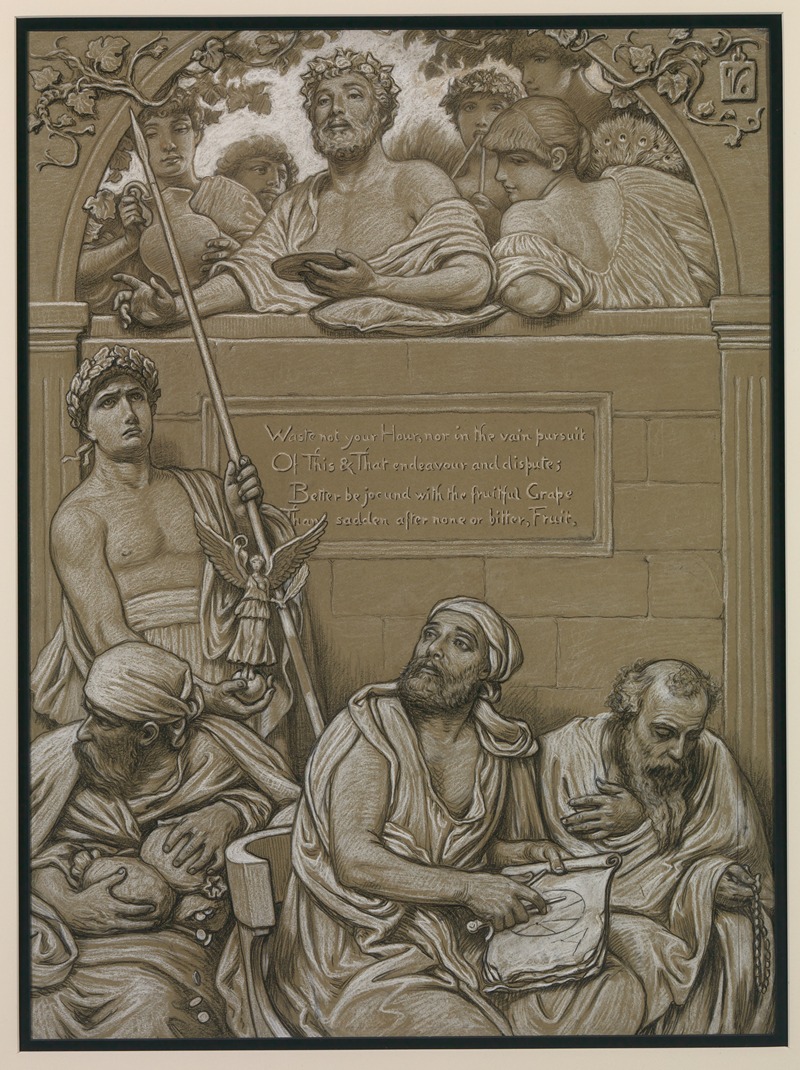
Frontispiece
A hand-painted replica of Elihu Vedder’s masterpiece Frontispiece, meticulously crafted by professional artists to capture the true essence of the original. Each piece is created with museum-quality canvas and rare mineral pigments, carefully painted by experienced artists with delicate brushstrokes and rich, layered colors to perfectly recreate the texture of the original artwork. Unlike machine-printed reproductions, this hand-painted version brings the painting to life, infused with the artist’s emotions and skill in every stroke. Whether for personal collection or home decoration, it instantly elevates the artistic atmosphere of any space.
Elihu Vedder's "Frontispiece" is a notable work of art created as part of his illustrations for the 1884 edition of "The Rubaiyat of Omar Khayyam," translated by Edward FitzGerald. Vedder, an American symbolist painter, was commissioned to create a series of illustrations for this popular and influential translation of the Persian quatrains attributed to Omar Khayyam, a Persian mathematician, astronomer, and poet. The "Frontispiece" serves as the introductory image for the collection, setting the tone for the mystical and philosophical themes explored in the text.
Elihu Vedder was born in New York City in 1836 and spent much of his career in Italy, where he was influenced by the European symbolist movement. His work often incorporated mystical and allegorical themes, making him a fitting choice to illustrate FitzGerald's translation of Khayyam's verses, which delve into existential and metaphysical questions.
The "Frontispiece" itself is a compelling visual representation that captures the essence of the Rubaiyat's themes. It typically features symbolic imagery that reflects the transient nature of life, the passage of time, and the search for meaning. Vedder's style is characterized by intricate detail and a dreamlike quality, which is evident in the "Frontispiece." The artwork often includes elements such as swirling patterns, ethereal figures, and celestial motifs, all of which contribute to its otherworldly atmosphere.
Vedder's illustrations for the Rubaiyat, including the "Frontispiece," were groundbreaking at the time of their publication. They were produced using a photogravure process, which allowed for high-quality reproductions of his detailed drawings. This technique was relatively new in the 19th century and helped to popularize the book, making it accessible to a wider audience. The combination of FitzGerald's evocative translation and Vedder's imaginative illustrations contributed to the enduring popularity of this edition of the Rubaiyat.
The "Frontispiece" and the accompanying illustrations were well-received by both critics and the public, cementing Vedder's reputation as a leading figure in the symbolist movement. His work on the Rubaiyat is often regarded as one of the most successful collaborations between literature and visual art in the 19th century. The illustrations have been praised for their ability to capture the spirit of Khayyam's poetry, providing a visual counterpart to the text's exploration of life's mysteries.
Today, Vedder's "Frontispiece" and the entire series of illustrations for the Rubaiyat are considered important works in the history of book illustration. They continue to be studied and appreciated for their artistic merit and their contribution to the interpretation of Khayyam's verses. Vedder's ability to translate complex philosophical ideas into visual form remains a testament to his skill and creativity as an artist.





